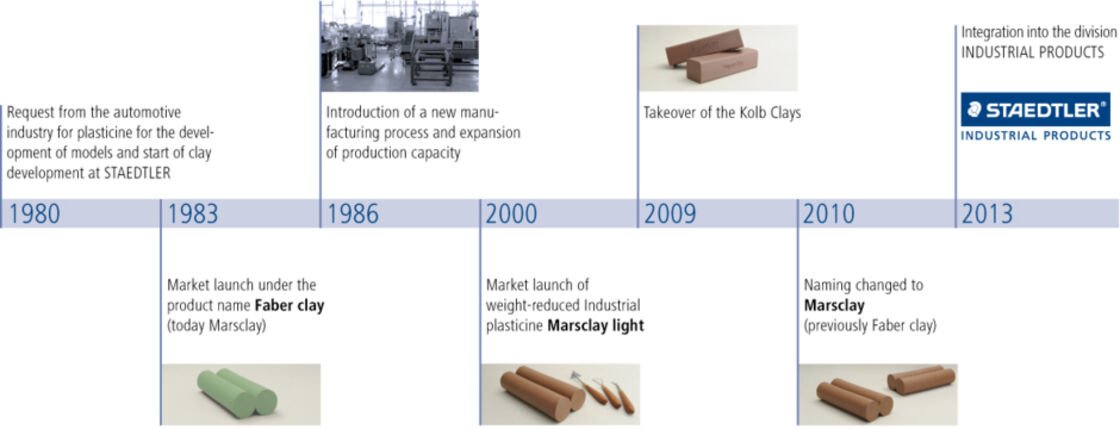Milestones of the Clay development

The discovery of clay - a history of success
The first automobiles were built like carriages, in which the petrol and diesel engines that had just been invented were installed.
After only a short time however, the customer demands grew and with them the desire for faster, more comfortable and more beautiful means of transport.
This brought about the plan with a large number of vehicle body builders to be able to implement individual wishes too - particularly in Hollywood. In about 1920,
a young man who was the son of a body builder had the idea of creating a small natural clay model for interested customers. In this way,
individual wishes could be determined quickly and made visible. This process was particularly interesting because desired changes after the presentation could be
made easily on the clay model. In the next step, a modelling clay was developed, which was free of disadvantages such as drying out,
shrinking and tearing. A plasticine manufacturer in the USA took over development, production and marketing of this product, which was called "styling clay" or simply "clay".
This manufacturer first delivered to the design studios in the US automobile industry and gradually increased to global car companies.
For this reason, more and more clay manufacturers appeared in the USA, Asia and Europe. This had consequences!
In about 1980, a German automobile manufacturer contacted the company EBERHARD FABER (now a subsidiary of STAEDTLER), whose operations included the production and sale of plasticine (FIMO, modelling clay etc.) for different purposes, and suggested the development of an optimised clay for design modelling.
In a confidential cooperation between the developers at STAEDTLER and the designers, many trials showed a recipe with which a synthetic material could be produced with selected raw materials in several production steps - a clay that exactly complied with the requirements of the designer: easy to model, tear resistant, stable at room temperature and with uniform consistency and colour. Clay 3D design models are essential in the form-finding of new drafts. With the new clay from the STAEDTLER house, scale and 1:1 models can be manually produced or prepared with the CNC milling machine. This clay was called Marsclay (previously Faberclay). The same care and attention was given to this material by STAEDTLER as with all other brands with the STAEDTLER LOGO. The new, high-quality product from a reliable German manufacturer, which is accompanied by a stringent quality control process from the selection of raw materials to the production process, was introduced to all German automobile manufacturers with an enthusiastic response.
Soon, Marsclay was also used in England, Spain, Italy, France, Sweden and the Czech Republic. Marsclay obtained familiarisation and recognition with its users and therefore followed the USA, Brazil, China, South Korean, Japan and Australia.
In 2000, the automobile industry requested for the weight of the clay to be reduced. As automobiles became larger and the 1:1 models became heavier, limitations in the studio equipment were quickly found. At STAEDTLER, the development was started and a new Marsclay light came into being - 40% lighter than the previous clay.
Now, according to the specific assignment of the automobile manufacturers, both types are used in parallel. STAEDTLER delivers to all German manufacturers and almost all European and many large and small manufacturers worldwide. Through the takeover of the company Franz Kolb Nachf. in 2009, the existing selection was rounded off with the Kolb clay.
While it is implemented as far as possible in the automobile industry, more and more schools and artists are discovering the advantages of clay.
Nowadays, STAEDTLER is the leading company in the styling clay market.